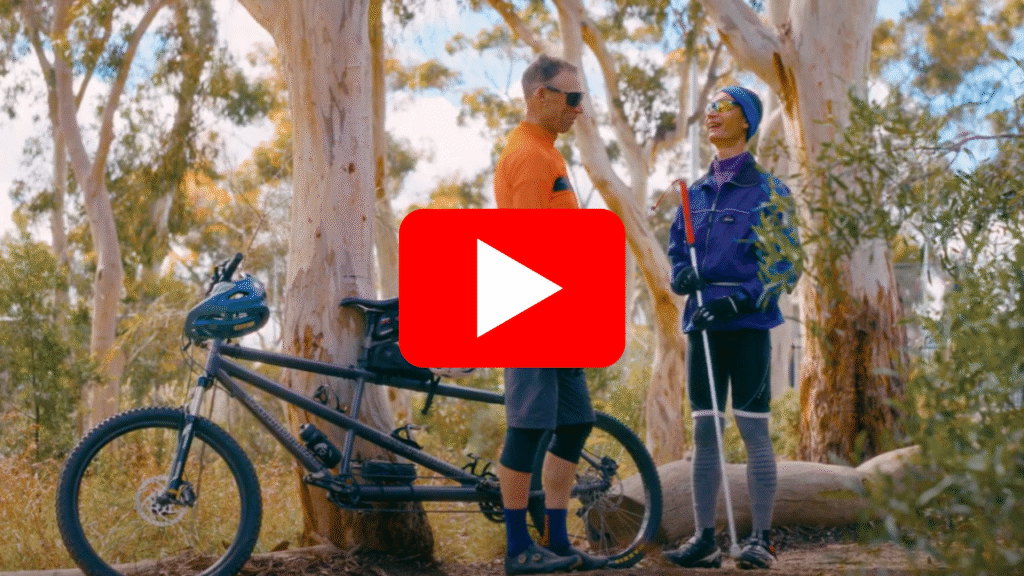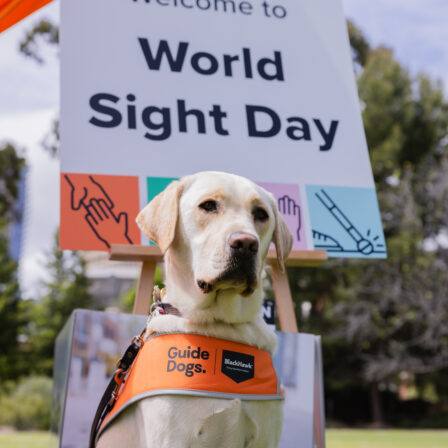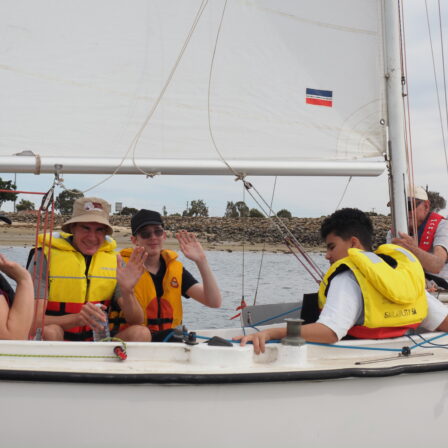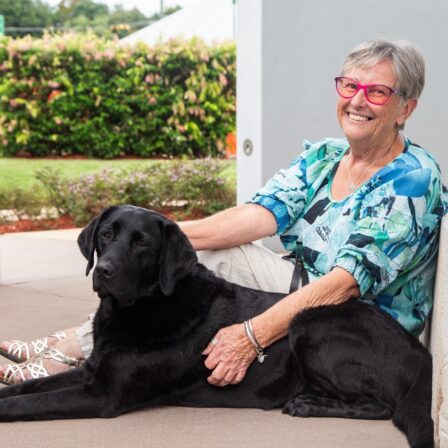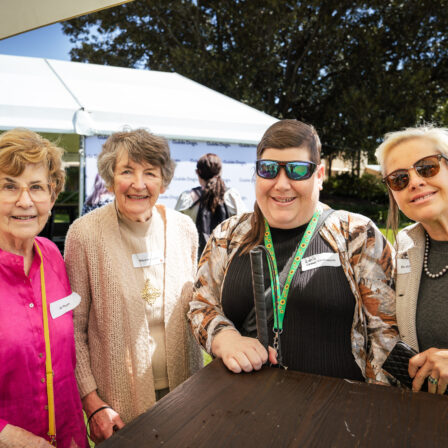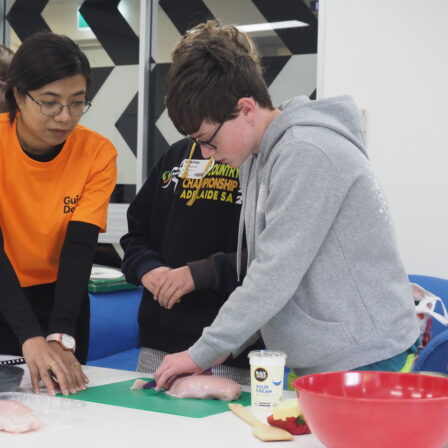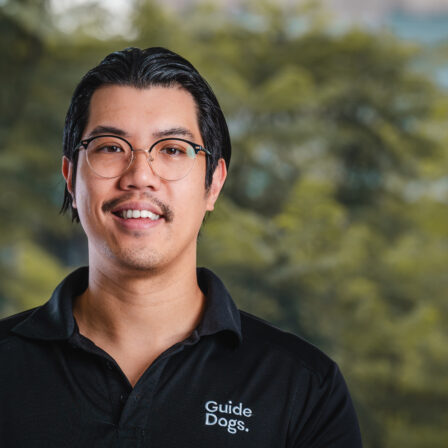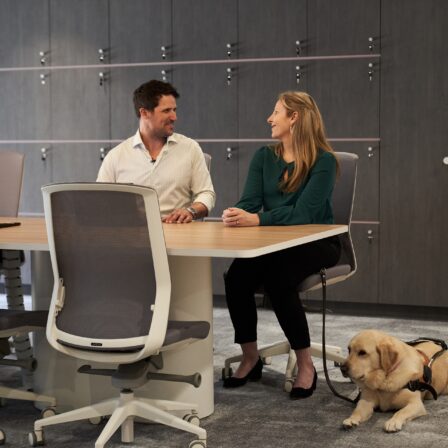News
International White Cane Day 2025
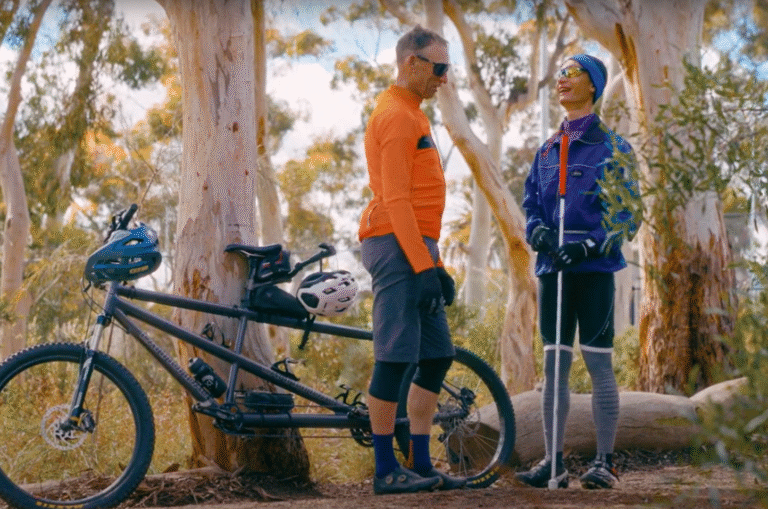
Australians living with low vision and blindness are proving every day that a disability does not limit ambition, talent or passion. They pursue careers, sports, hobbies and adventures with determination and skill, using white canes to build independence and confidence to thrive in a world favouring sighted people.
For the more than 453,000 Australians living with blindness or low vision1, assistive tools such as white canes can be life changing. The white cane is more than a mobility tool. It helps people navigate obstacles like stairs and curbs, signals to others that the user has low vision and allows them to move through busy environments safely and confidently. It symbolises skill, autonomy and empowerment, enabling people to live life on their own terms.
This International White Cane Day, Guide Dogs SA/NT is calling on all Australians to challenge outdated assumptions about what people with low vision can achieve. International White Cane Day celebrates skill, independence and courage, and encourages the community to learn how to support those boldly pursuing their passions.
Thanks to white cane training and mobility services, the majority (80%) of Guide Dogs Australia clients report greater confidence, and three-quarters (73%) are living the life they want. These tools and skills allow people to move through their communities with assurance, continue their education, maintain careers and engage in the activities they love.
Tandem cyclist and long-time runner, Simon Wong, 59, lost 99 per cent of his vision when he was seven. Despite losing his remaining sight about 15 years ago, it hasn’t stopped him competing in para cycling championships on a tandem bike and running each week.
“I average about 60 to 70km per ride, and mostly on the road,” Mr Wong said. “In September I did the Rockleigh 105 Gravel Fest ride on a tandem, which was a gravel ride. I like the freedom of riding.”
When not cycling or riding with a guide, Mr Wong uses his white cane to help him navigate when he leaves his house.
“My white cane is my best friend when I get out of the house,” he said. “I use it when I’m in a new environment, at work in the office, when I’m in the community.”
“The white cane allows me independence, being able to get around safely. It also lets people know I might need a bit more time crossing the road when there’s traffic or consideration when I’m getting around the community.”
Lee Kumutat, white cane user and National Advocacy and Policy Manager at Guide Dogs Australia, says the cane represents more than mobility.
“I learned to use a white cane at five, and those transformative skills have stayed with me. Today, I mainly use a Guide Dog, but I carry a cane for extra information like judging steps, gaps, or giving my dog downtime. If she signals no safe path, I’ll use my cane to check. At concerts, festivals, or fireworks, places better suited to a cane, I switch, and yes, my Guide Dog agrees.
“When vision changes, it’s not just practical tasks that get harder; self-esteem and independence can take a hit too. Navigating efficiently is key for confidence, autonomy, and belonging. Guide Dogs provides training to help people use canes effectively across different terrains and situations, building independence and confidence. The impact is immense, helping people move from a loss of mastery to deeper community connections.
“We’re calling on all Australians to recognise the life-changing power of the white cane. For those with blindness or low vision, white cane training can unlock confidence, independence, and connection, helping them move through their environment and community with confidence. Next time you see someone using a white cane, remember—it’s not just a tool, it’s empowerment.”
Guide Dogs SA/NT is calling on Australians to learn how to better assist people with low vision and blindness. Simple strategies, like asking before offering help, avoiding assumptions and being mindful of obstacles are just some of the top tips being shared by people with lived experience to help everyone take action.
The organisation provides life-changing white cane training, which builds confidence, independence and connection for people living with low vision and blindness. Chief Executive Officer Aaron Chia said International White Cane Day was also an opportunity to highlight the range of support available to people living with blindness or low vision.
“We’re working with children, young adults and older Australians who are looking for support to enable them to reach their goals, whether that’s being independent and catching a bus to the city, or going to university every day,” Mr Chia said. “White canes have been an important guidance tool for people for generations, and we understand how they can help a person build confidence when they’re often faced with physical and psychological obstacles.”
Guide Dogs’ White Cane Wisdom: Ten Tips to provide support
- Say hello, offer help – A polite introduction and offer of assistance is always appreciated.
- Respect independence – Don’t be offended if your help is declined; many cane users prefer to navigate on their own.
- Ask before touching – Never grab, pull or physically touch a white cane user unless invited.
- Hands off the cane – Only touch a cane if the user asks you to.
- Look up from your phone – Stay aware in crowded spaces to avoid collisions.
- Give walking space – White cane users need room to detect obstacles and navigate safely.
- Keep pathways clear – Push in chairs, store bikes and ensure doorways and paths are accessible.
- Remember partial sight – Many users have some vision, so don’t assume they can’t see at all.
- Be mindful of design – The world is built for sighted people; small adjustments can make it more inclusive.
- Celebrate and share – This International White Cane Day, educate yourself, your friends and family, and share our videos to raise awareness.
